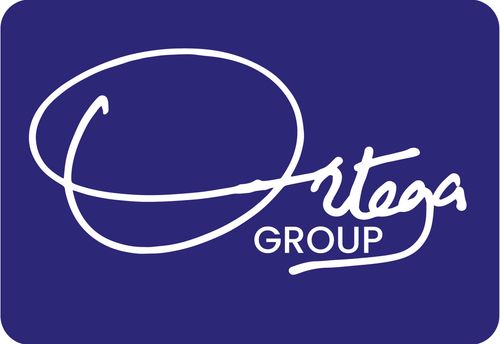There are usually two routes to market success. The first route is that of the ‘outcome-focused’ organizations, the ones that want an outcome at all costs. It just doesn’t matter what and how the people do it, they are hell-bent on that outcome. And having a better outcome each time. These organizations tend to win in the market in the short term. They’re insanely great at execution, they just get things done.
Most business leaders tend to optimize for this ‘insane execution’, just get things done, the number comes in, and we call that year a wrap. Then comes another year, another execution, and wow, the second-year number comes in. It’s the most popular route for those obsessed with quick turnarounds because it does surely turn around things in record time. Anyone that gets great at getting things done will always get things done.
But there’s also an unpopular route, yet superbly sustainable. It’s the route of process-driven companies. It tends to be superbly slow. Part of its unpopularity arises from the fact that when applied in emergency situations, it tends to derail things. Yet, rarely do emergencies happen but companies tend to be run as though they were emergency operations. Many things go wrong when organizations are run as emergency operations. But there’s also an incentive to run organizations in this way. In several companies, there’s now a tendency to cap the senior executive tenures to not more than 4 years. Thus, it becomes common for C-suite executives to revert to the outcome-based route, since it delivers the results needed for them to score on their short tenure report.
It’s this kind of thinking that also buries organizations in the long-term. None of the leaders ever takes time to work at the big problems, the long-term cancers that will kill the company in the long-term. No one dares to make that crucial surgery. It can be seen in a Chief Finance Officer postponing a crucial write-off and keeping certain assets on the balance sheet. So that the number makes sense at the end of the financial year.
We argue that if you run an organization in emergency mode, it will soon go into criticality. It may deliver some recoveries in the short term, but in the long-term, it’s bound to die at the same knife that was claiming to be a saviour.
Sustainable companies obsess about process, they spend most of their time understanding the process, all the interdependencies and constraints. By doing this, they can build phenomenal processes that will effortlessly deliver outcomes. At the global level, think of organizations such as Michelin. In Uganda, think of organizations such as the Mandela Group. Leaders in these organizations are trained to become process-maestros, the kind that build world-class processes. It’s harder work to build processes. If you build a bad process for example, it means you’re locked in it, and so is your top line and bottom line. It’s often risky to attempt process-interventions, they will force you to think.
There’s another kind of leadership that will be process -led but will customize the process towards their personality. Thus, when the next leader comes in, they find that they must build a new process. That would be a precarious way to approaching this process-route.
Process Driven versus Outcome Driven: A Simulation
Let’s simulate these two routes. Imagine Company A and Company B, both are in the business of food delivery in Bugolobi. Company A chooses to focus on the outcome, just finding a way to get food to the clients aka ‘get it done.’ And indeed, in the short term, Company A gets it done. If it means motivating its riders with abnormal tips for a delivery, they do it. If it means the CEO jogging to the client with the order, they do it. They become popular in the market because they just get it done. The food gets to you. Sometimes, not in the right condition. But it always gets to you in some way. They get it done. Sometimes they get it done in 30 minutes, sometimes in a hour. But hey, they get it done.
Thus, Company A drives the market in the short term, it prides in growing order volumes, more riders request to sign-up, and so do more restaurants. In return, word of mouth goes around that Company A will always deliver your food, so more clients subscribe to Company A. But soon, as things scale up, Company A realizes that whereas it was easier to put out fires when they were dealing with few restaurants and few clients, now with the high numbers, they are getting overwhelmed. Orders get exceedingly delayed, clients end up cancelling orders, riders are getting frustrated as the tips are not consistent and high as they used to be. The whole chain falls apart at the knife of ‘just get it done.’
Let’s think of Company B. They take the process-route. Therefore, they study Bugolobi and map out all the restaurants and the routes. They simulate this problem and realize the optimal number of riders one would need depending on certain order volumes. They bring in some theoretical computer scientists to model this problem of delivery. Once they do this, they know the kind of platform they would need as they go out to source for a food delivery application. They also study the different foods in the different restaurants. How long will these take to be prepared? They take time to physically order anonymously in a restaurant before they sign it up. When a restaurant says the meal will be prepared in 20 minutes, is it always 20 minutes? They look at the stock-out scenario. How will there be real time reporting of a menu item stock-out? They think about the delivery experience. They map this out. They think about speed, and price. How will they optimize speedy deliveries at the right cost structure? They ask themselves all these uncomfortable questions as they launch the process. This constant scrutiny and obsession about their process doesn’t stop. As such, they start off as a one-hour delivery operation. They keep getting better, improving this, and as the numbers grow, they start to reduce this from just one hour to under 45 minutes, and before long, it’s now under 30 minutes for most menu items. They’ve understood that it’s about the process. Get the process right, and you need not worry about the result. They’ve understood that in life; ‘better to measure twice and cut once’ than to ‘measure once and cut thrice.’
Thus, in the long-term, the market tilts in favour of the process-driven company B. Company A loses out in the long-term, and by this stage, it’s often too late for them to play catch-up and shift to the process route. This is largely what most competitors of Café Javas fail to get about it. Café Javas is not just customer care, it’s not just the well-decorated restaurant, it’s about the process. They ensure that the process is optimized in such a way to obsess about the customer. They obsess about the process, the managers, the leaders, the employees know this. Unfortunately, it’s a work that never ends, and it’s a work that takes time to build this process mind-set. Long-term, business success is heavily skewed towards ‘how you do something’ not just ‘what you do.’ The ‘How’ is the determinant of long-term business success.

